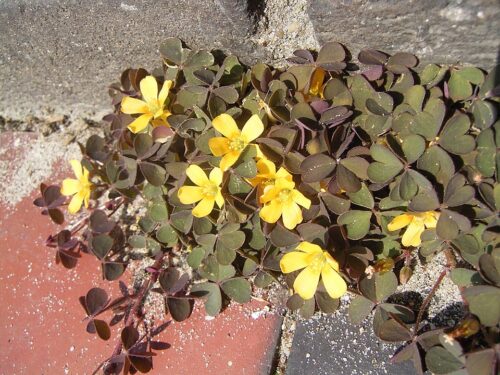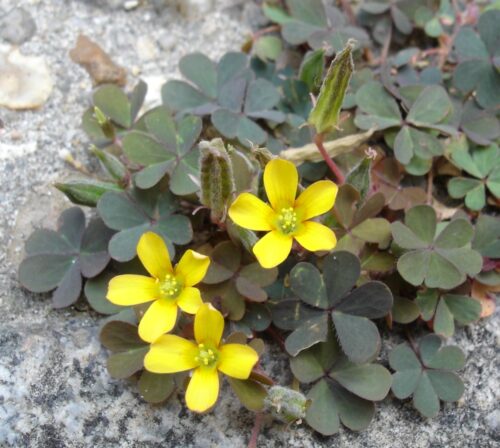The creeping woodsorrel is both annual and perennial. It is a creeping plant with bronze colored leaves.
Also known as:
Procumbent yellow sorrel
Sleeping beauty
Creeping woodsorrel – Oxalis corniculata – belongs to the wood sorrel family (Oxalidaceae). The creeping woodsorrel is both annual and perennial. It is a creeping plant with bronze colored leaves. This creeping woodsorrel blooms from May to October with yellow flowers, which only open in clear weather. Creeping woodsorrel propagates by means of runners and seed. The seed pods open when disturbed, spreading the seed. The creeping woodsorrel is rampant, especially on bare ground. It is therefore regarded as undesirable (weed).
Habitat
Creeping woodsorrel is found all over the world – except at the poles. In the 1970s this wood sorrel was a rare sight; now it is mainly found in urban environments. She likes light soils in the sun. In the garden you will encounter the creeping woodsorrel between the tiles, in pot plants, conservatories, greenhouses and against warm south-facing walls.
Control
The creeping woodsorrel can multiply considerably under the right conditions. Remove the plants before the pods have formed – this prevents the plant from seeding: remove the plant with root nodules and all. Pulling out is most effective; boiling water (with a splash of vinegar if you want) will also work.

Edible
The leaves and root nodules of the creeping woodsorrel are edible. The taste is sour, lemony. The creeping woodsorrel contains vitamin C and oxalic acid (just like rhubarb). That acid means that too much of it cannot be eaten – after all, oxalic acid is poisonous. See file oxalic acid .
There is a garden variety of the creeping woodsorrel: Oxalis corniculata var. purpurea.

